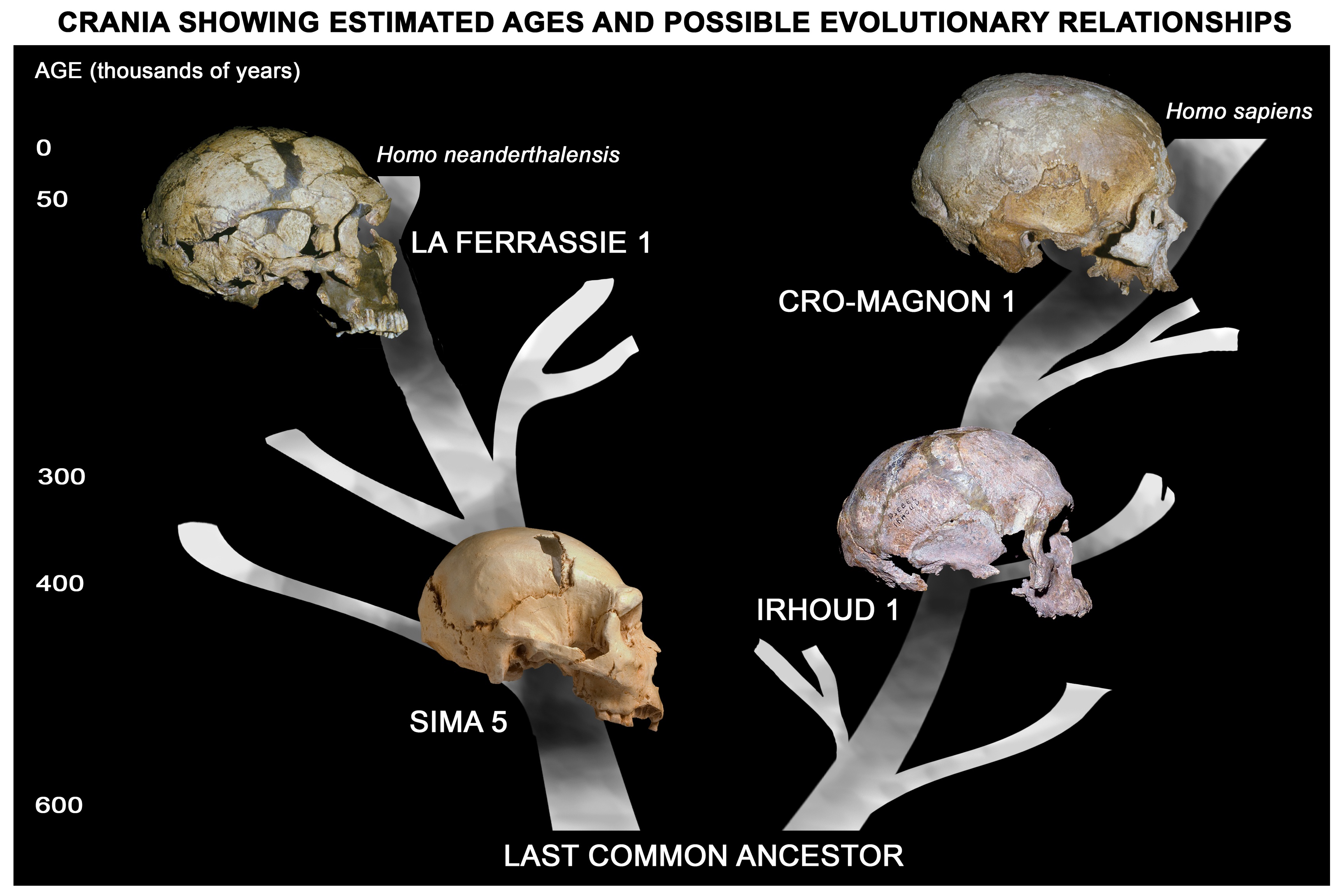Many scientists accept that the Omo Kibish and Herto (Ethiopia) fossils, dated between about 150-200,000 years ago, represent the earliest known Homo sapiens. However, there is now evidence from fossils and DNA that the modern human and Neanderthal lineages separated at least 500,000 years ago. In my view, this divergence should mark the origin of these two groups, with the implication that there should fossils much older than 200,000 years old in Africa and in Eurasia that lie on the respective lineages of modern humans and Neanderthals. This looks true for the Neanderthals, since the Sima de los Huesos (‘Pit of the Bones’) fossils from Atapuerca can now be firmly placed on the Neanderthal lineage from anatomy and DNA at around 430,000 years. Although we don’t yet have good ancient DNA evidence from Africa, I’ve suggested that fossils like Florisbad (South Africa) and Jebel Irhoud (Morocco) might represent early or “archaic” H. sapiens that existed before the full suite of modern human characteristics had evolved. I used to argue that “anatomically modern humans” (AMH - essentially looking like us today) are the only group that should be called H. sapiens. Now, I think that AMH are only a sub-group within the species H. sapiens, and that we should recognise the diversity of forms within early H. sapiens, some of which probably went extinct.
Now, Jean-Jacques Hublin and colleagues have published two papers in the journal Nature describing further discoveries from Jebel Irhoud, and dating all the material to about 300,000 years, more ancient than anyone had previously believed. These finds currently represent the oldest association of probable H. sapiens and Middle Stone Age tools, and they shift Morocco from a supposed backwater in the evolution of our species to a prominent position. The Irhoud fossils display some primitive features in the braincase, browridges, and large face and teeth. Yet the delicate cheekbones and retracted face look more modern, as do details of the skulls and teeth, and the shape of the jawbones. Associated evidence of fire and sophisticated stone tools from the site also suggest complex behaviour in these early members of our lineage. How this material fits into the bigger picture is not yet clear, as separate early sapiens populations may already have existed in different parts of Africa about 300,000 years ago, as well as surviving examples of the more ancient lineages of H. heidelbergensis/rhodesiensis and H. naledi further South. The Sahara Desert was not always the forbidding barrier it is today, so there may have been human contacts across it at times, and similarities between the Irhoud material and the enigmatic Zuttiyeh and Tabun 2 fossils from Israel may also hint at connections with western Asia too.

Comparing the Irhoud and Sima fossils, we can see that they share comparable primitive features in larger faces and smaller brains. But their differences show that by 300,000 years ago the two lineages were already diverging strongly from their common ancestor. Such a deep separation time may increase the likelihood that the modern and Neanderthal lineages independently evolved features such as larger brains and smaller teeth, in parallel, in Africa and Eurasia. Whether they could also have independently developed behavioural traits in tool-making and symbolism remains to be seen.
 Paleobiology
Paleobiology
Responses